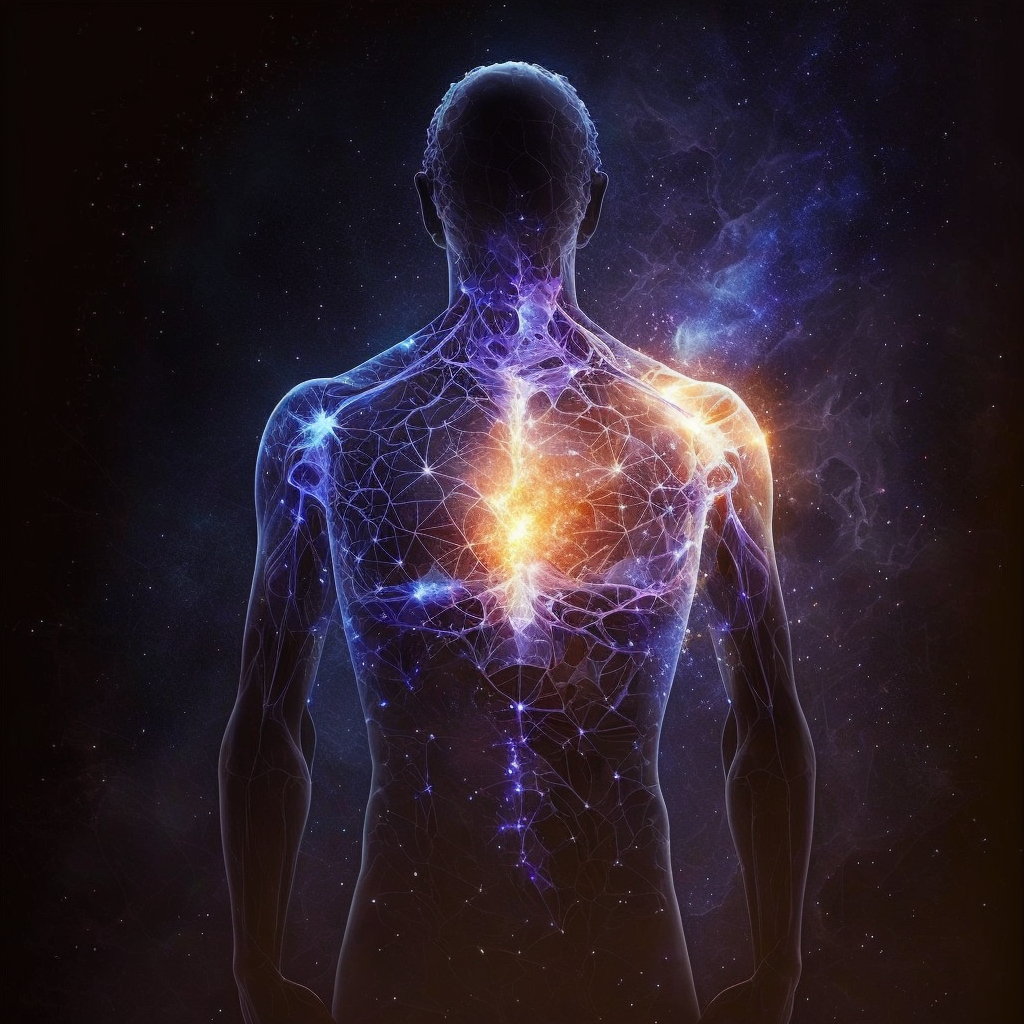Unraveling the cage of control
@FractalBounce: Dec 4, 2023

In “Kings of the Earth: Rule by STATE-an” we delved into the Biblical concept where Satan is granted dominion over the Earth, exerting influence on the governing authorities. Within this framework, these earthly rulers utilize the fiat system as a tool to create a confinement. for humanity. Through the weaponization of the monetary system, the Kings of the Earth actively promote Satan’s agenda, seeking to maintain a separation between humanity and God. Leveraging their access to limitless funds, governments can orchestrate an endless array of psychological operations (psyops) on their populations, compelling compliance with their malevolent plans. In ancient times, rulers declared themselves as gods, while in contemporary times, leaders, through their promotion of secular humanism, assert that there is no god because we, as individuals, are gods. This belief suggests that we can mold and manipulate reality according to our desires. These notions are forcefully integrated into the culture through media, education, and public policies. The Fiat Matrix, is the cumulative outcome of various psyops initiated by the ruling class—a social and spiritual construct that imposes limitations on human freedom. Its foundation rests on control over the money supply, which represents the supply of stored human energy.
Embracing our Spiritual Essence
Over time, there is a tendency to view the fiat matrix as the ultimate reality, believing that everything real exists within its confines, and nothing greater is conceivable. This illusion is the exact narrative perpetuated and endorsed by western governments. Amidst the deception of the fiat matrix, it is important to reexamine the spiritual dimensions of our existence. The Biblical narrative provides insights into the core of human nature. Analysis of several pivotal verses puts forth a compelling argument: At the core, human beings are fundamentally spiritual entities.
The biblical drama begins with the creation of humanity, emphasizing a divine act that goes beyond the physical. In Genesis 2:7, it is written,
"Then the Lord God formed a man from the dust of the ground and breathed into his nostrils the breath of life, and the man became a living being."
The act of breathing life into the first human underscores the idea that our existence is more than mere flesh and blood; it involves a spiritual dimension. The concept of being created in the image of God, as expressed in Genesis 1:26-27, elevates human identity.
"Let us make mankind in our image, in our likeness,"
The divine resemblance suggests a spiritual connection and a unique status for humanity in the grand tapestry of creation. Ecclesiastes 3:11 offers a profound reflection on the human condition:
"He has also set eternity in the human heart."
Illustrated here is a yearning for something beyond the temporal, hinting at a spiritual aspect deeply embedded within us. The Apostle Paul delves into the internal realm in 1 Corinthians 2:11, stating,
"For who knows a person’s thoughts except their own spirit within them?"
The recognition of an inner spirit suggests a dimension of human existence beyond what is visible on the surface. In 2 Corinthians 5:1, the biblical perspective transcends the physical realm:
"For we know that if the earthly tent we live in is destroyed, we have a building from God, an eternal house in heaven."
Paul speaks to the eternal nature of our being, pointing to a spiritual home beyond the earthly.
The Apostle Paul reinforces the spiritual connection in Romans 8:16:
"The Spirit himself testifies with our spirit that we are God’s children."
We can see a close link between the human spirit and the divine, affirming our spiritual heritage. Together, these verses collectively weave a narrative that places the spiritual aspect of humanity at the forefront. The biblical view is in opposition to the secular humanism of Western Governments. It is important not to lose sight of the profound truth that we are more than physical beings; we are spiritual entities, closely connected to a higher purpose and a divine origin. Embracing our spiritual essence can offer solace, purpose, and a deeper understanding of the human condition.

Money: The Living Testament of Human Energy
In the modern world, money represents more than just currency. It serves as the tangible embodiment of the energy, effort, and time individuals invest in the pursuit of their goals. Let’s look into the concept of money as the stored fruit of human energy, exploring key aspects such as the Labor Theory of Value, time and effort, investment, opportunity cost, savings and accumulation, entrepreneurship and risk-taking, and the role of human capital.
At the heart of the idea that money is the stored fruit of human energy lies the Labor Theory of Value. This economic concept, championed by figures like Adam Smith and Karl Marx, says that the value of goods and services is determined by the amount of labor required for their production. In essence, money becomes a symbolic representation of the labor expended to create or obtain it. The act of earning money is, fundamentally, an exchange of time, skills, and effort for compensation. Each dollar earned represents a unit of energy invested in work. The more time and effort dedicated to a task or job, the greater the value of the money earned, reinforcing the notion that money is a direct reflection of human energy.
When individuals choose to engage in work and earn money, they inherently face opportunity costs. Money, in this context, is not just a medium of exchange but a representation of the alternative uses of time and energy forgone in the pursuit of a particular economic activity. The decisions we make about how to spend our time and energy are, in essence, decisions about what to store in the form of money. Savings represent the intentional storage of value accumulated through past efforts. Money set aside reflects a reservoir of human energy that can be tapped into for future needs and aspirations.
Entrepreneurs, by nature, are risk-takers who invest their time, ideas, and resources with the expectation of financial returns. The money earned through successful ventures is not just a profit; it is a testament to the courage and energy invested in navigating uncertainties, illustrating how entrepreneurship is a dynamic manifestation of human energy in the economic landscape.
Viewing money as the stored fruit of human energy provides perspective on its significance in our lives. From the labor theory of value to the detailed interplay of time, effort, and opportunity cost, money encapsulates the essence of human endeavor. Recognizing the multi-faceted nature of money allows us to appreciate not only its economic functions but also its symbolic representation of the energy we contribute to the world.
The Fiat Ponzi: Diluting the Hard-Earned Fruits of Human Labor
In global economics, the nature of central bank fiat money raises questions about its impact on the hard-earned fruits of human labor. The current system operates as a fiat ponzi scheme, designed to dilute, trap, and steal the stored value of our efforts.

As central banks expand the money supply the purchasing power of money diminishes. The stored fruits of labor lose value over time, quietly slipping away through the subtle erosion of purchasing power.
The foundation of the monetary system is debt-based, and this has profound implications. Central banks create money by lending it into existence. However, this mechanism leads to an inflationary spiral as the continuous injection of new money into the economy outpaces real economic growth. As more money circulates, the value of each unit decreases, contributing to the dilution of the fruits of human labor.
The fiat monetary system widens the chasm of wealth inequality. Those with the means to leverage debt for investments or asset acquisition often benefit disproportionately. Meanwhile, individuals without such advantages see the value of their stored value diluted, exacerbating existing disparities in wealth and financial well-being.
The cyclical nature of economic expansions and contractions is a hallmark of the fiat ponzi system. The creation of money through debt leads to periods of exuberance and prosperity, followed by inevitable contractions. In economic downturns, the stored fruits of labor face dilution as the value of assets and currencies fluctuate, impacting the financial well-being of individuals.
The injection of money into the financial system results in asset price inflation, where the value of financial assets rises disproportionately compared to other goods and services. This can benefit those who hold such assets, but it may also reduce the purchasing power of those who don’t, particularly if wages fail to keep pace with the inflation of asset prices.
The Fiat Matrix: Unraveling the Cage of Control
In the web of global finance, the fiat matrix serves as a restricting mechanism, a cage carefully woven by a ponzi system, influencing and shaping human beliefs and actions. It is a social and spiritual construct that imposes limitations on human freedom. This complex system, governed by central banks, extends its reach into various aspects of society, creating a complex framework that subtly molds our reality. The components of the fiat matrix function as a prison, in which the threads of human existence are manipulated.
At the heart of the fiat matrix lies the control over economic policies. Central banks, armed with the power to print money, dictate the financial landscape. This control influences governments and shapes economic policies that, in turn, mold the structures of societies and direct the flow of resources.
The fiat matrix extends its influence into the political realm through financial leverage. By funding political campaigns, parties, or specific initiatives, central banks subtly direct the narrative of political discourse, potentially shaping the ideologies and decisions of those in power. The relationship between politicians and financial backers often shapes the formulation of policies. This symbiotic connection manifests in a way where politicians, reliant on campaign contributions and support, may be inclined to create policies that serve the interests of those who provide them with financial backing. This dynamic can lead to a system where the concerns of influential donors, corporations, or interest groups hold considerable sway over the legislative agenda. While political campaigns require significant financial resources, the implicit expectation is that the support garnered translates into policy decisions favorable to the benefactors.
With freshly printed money, central banks can infiltrate the educational domain. By funding institutions and research initiatives, they shape the intellectual landscape. This influence extends beyond classrooms, subtly molding societal perspectives and guiding the development of knowledge and beliefs.
With the power to print unlimited money, central banks become the architects of our reality and exert control over cultural and media narratives. Ownership stakes, advertising, and sponsorship opportunities provide avenues to shape narratives. This influence extends to mainstream media, guiding public opinion and fostering a cultural environment that aligns with certain interests.
The government can then extend its reach into the realms of religion and charity. Through financial contributions, central banks can influence the priorities and messages propagated by these institutions. This subtle control shapes societal values, reinforcing narratives that align with the aims of the government.
The process extends its grasp into the corporate world, shaping incentives for businesses. Through the manipulation of interest rates and monetary policies, central banks influence corporate behavior, molding the economic direction and steering the actions of corporations to align with their playbook.
In this way, the banking system stretches its influence to the very sustenance of human life. Through control over agricultural policies, central banks impact food production and distribution. This control shapes dietary realities, influencing the availability and accessibility of certain types of food within society.
The sinister mechanism reaches beyond national borders, establishing a global economic hegemony. Major central banks exert influence on international trade, geopolitics, and the global economic order, subtly steering the course of international relations and power dynamics.
The monetary system influences the distribution of wealth within society through its monetary policies. Measures like quantitative easing can inflate asset prices, impacting the wealth distribution pyramid. This influence shapes societal structures, contributing to power imbalances and reinforcing the existing order.
The government uses its power to create a false reality, woven by the fiat monetary system influencing every facet of human existence. From economic policies to cultural narratives, this construct subtly controls the threads of reality, molding beliefs and actions in alignment with its sinister design. Understanding the complexities of the fiat matrix is essential for those who seek to navigate the interplay between spirituality, power, finance and the shaping of our ability to live sovereign lives.